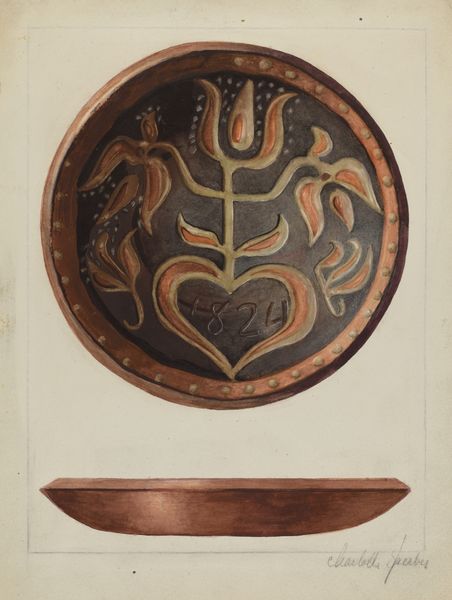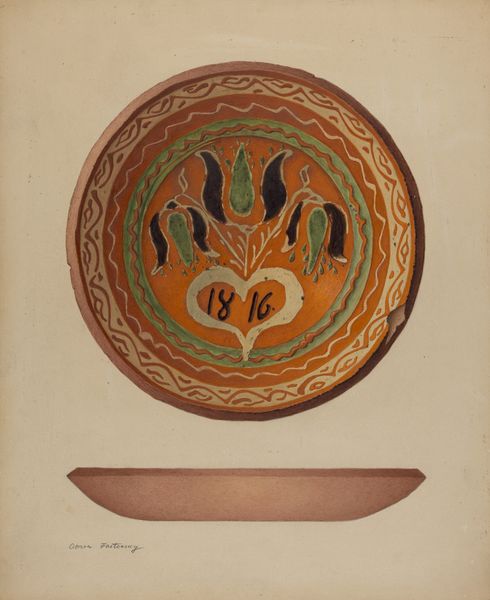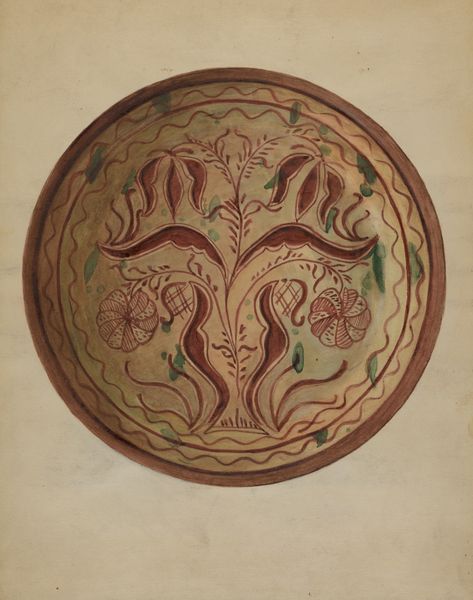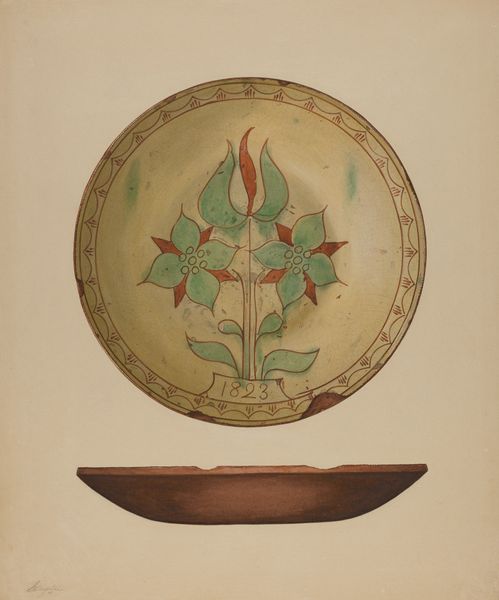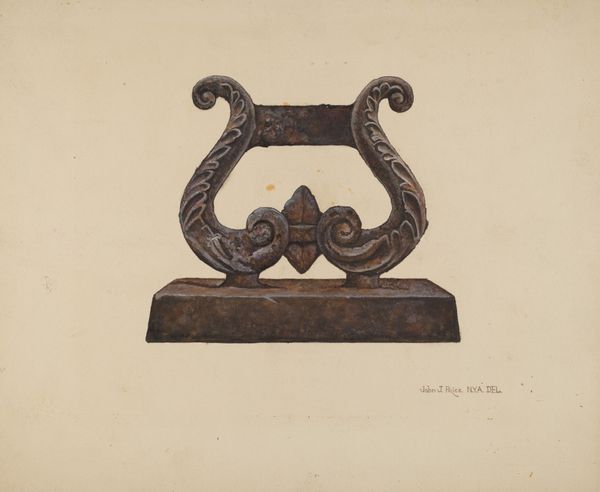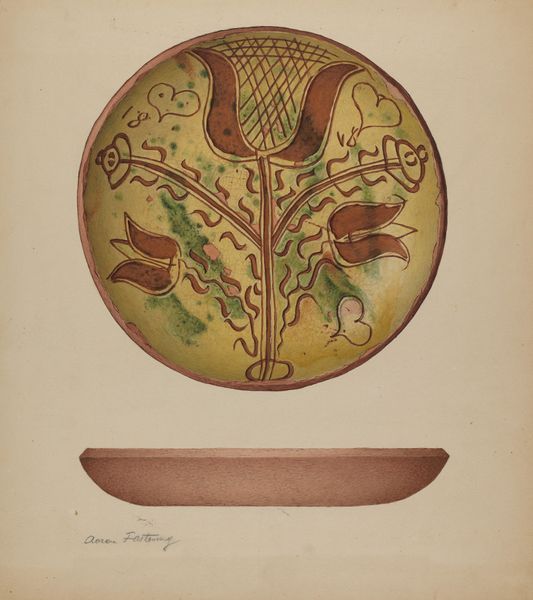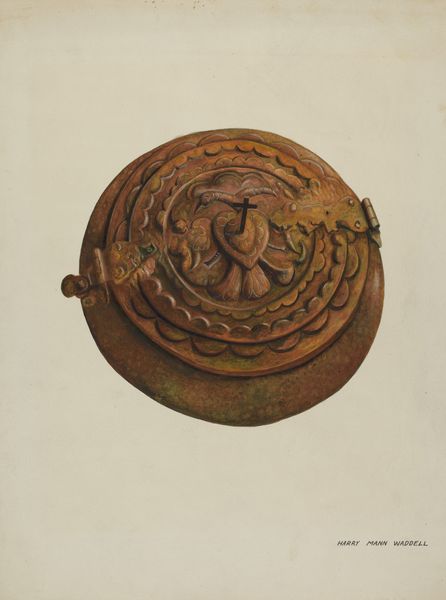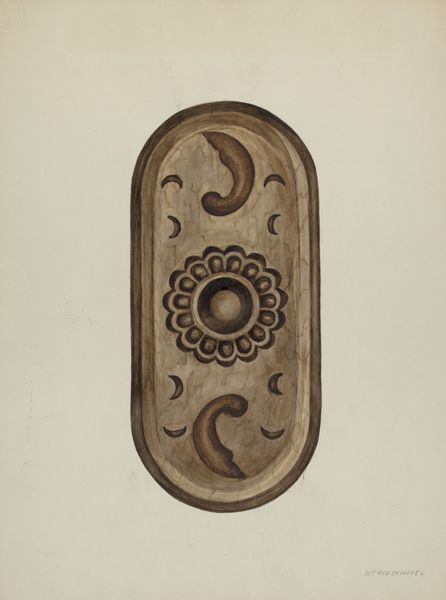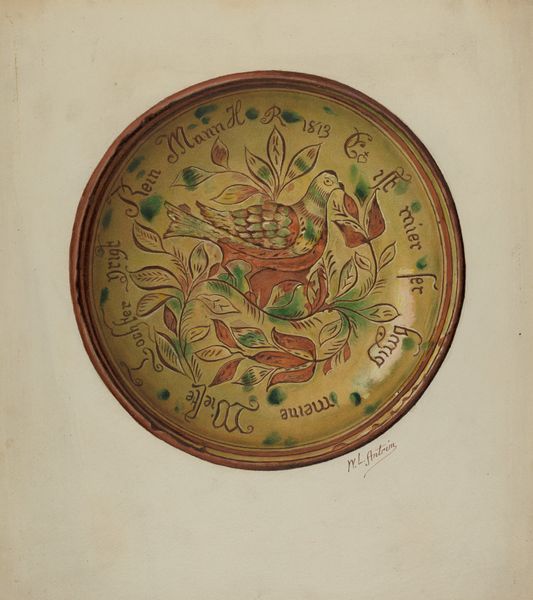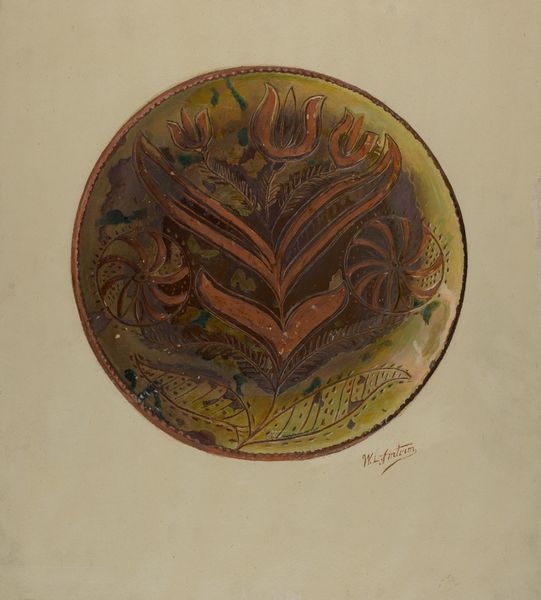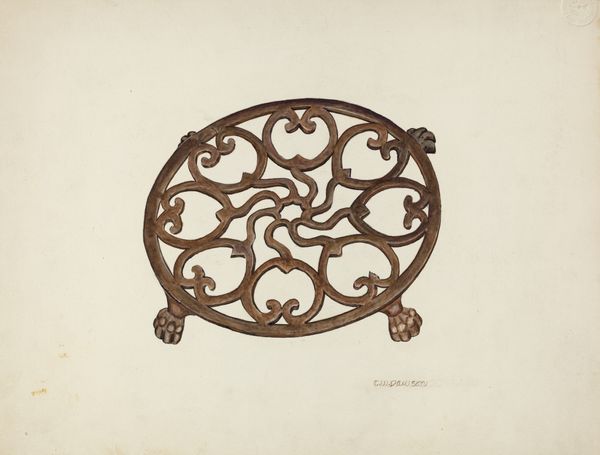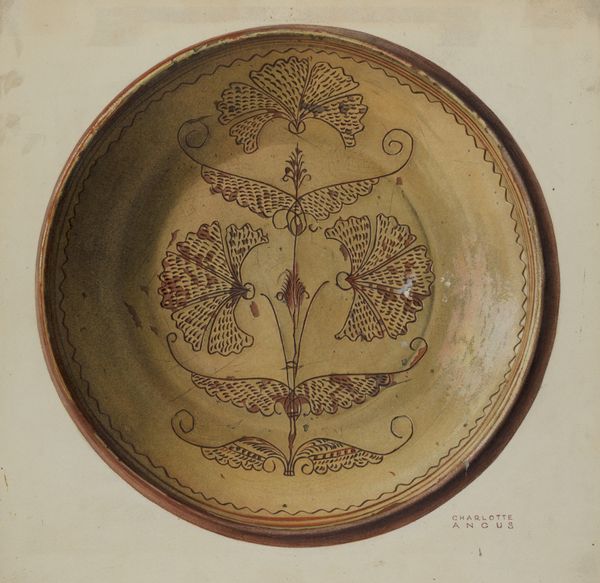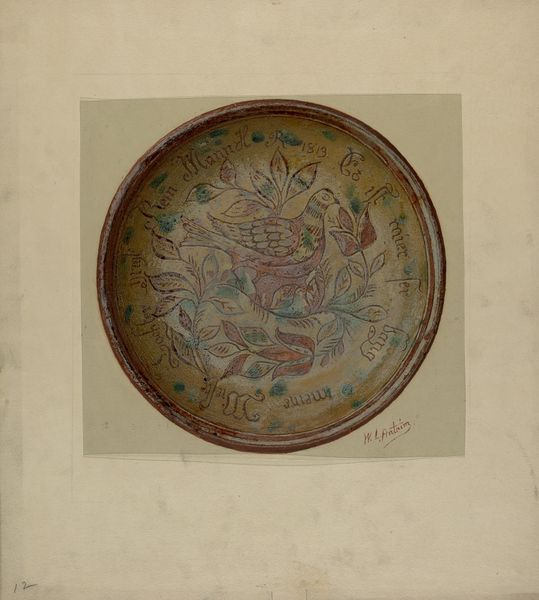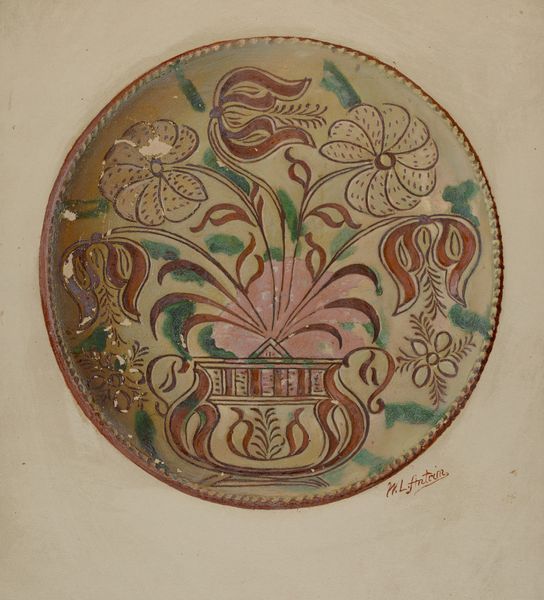
drawing, paper, watercolor
#
drawing
#
paper
#
watercolor
#
coloured pencil
#
folk-art
#
watercolour illustration
#
regionalism
#
watercolor
Dimensions: overall: 45.4 x 38.2 cm (17 7/8 x 15 1/16 in.) Original IAD Object: 10" in diameter
Copyright: National Gallery of Art: CC0 1.0
Curator: Welcome. Let's turn our attention to "Pa. German Plate," a drawing by Aaron Fastovsky, created circa 1940 using watercolor and other media on paper. What’s your immediate response? Editor: Stark but somehow warm. There's a definite contrast between the dark, almost somber, background of the plate itself and the rustic, cheerful colors used in the ornamentation. The shapes are also simplified, giving it an unpretentious feel. Curator: Indeed. Let's examine that stark contrast. The artist skillfully employed a limited color palette, focusing on the interplay of deep browns and muted oranges, creating a balanced and unified composition, one could read its structural form as being analogous to the conceptual unity of this Pennsylvania Dutch folk art style. Editor: And those decorative elements speak volumes, don't they? The tulip motif, so prevalent in Pennsylvania German folk art, usually symbolizes faith, hope, and charity. The inclusion of the heart shape with the inscribed year—1824—underscores a connection to a specific time, potentially commemorating a birth, marriage, or some other significant event. Curator: Note also the careful arrangement of these iconic forms. The symmetry in the plate’s design contributes to its aesthetic appeal, echoing similar forms within the broader lexicon of art and design that emphasize a harmonious balance between line, shape, and color. Editor: It makes one wonder about the cultural memory embedded in this drawing. How many similar plates, each with its own story, would have been part of everyday life? This isn't just a drawing of an object; it's a glimpse into a heritage, a symbol of enduring traditions. Curator: Certainly. Its deliberate regionalist style lends a layer of authenticity, reflecting a specific place and time, and in that the composition achieves an ideal that’s simultaneously grounded and timeless. Editor: It’s been such a fascinating dive. I hadn’t expected to unearth such layers of cultural resonance and artistic deliberation within such a seemingly straightforward depiction. Curator: Agreed. The piece invites one to reconsider the conceptual richness inherent in both artmaking and its interpretation as a vital component of our comprehension and contemplation.
Comments
No comments
Be the first to comment and join the conversation on the ultimate creative platform.
